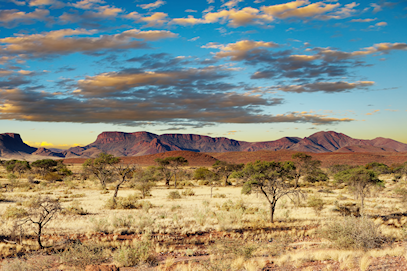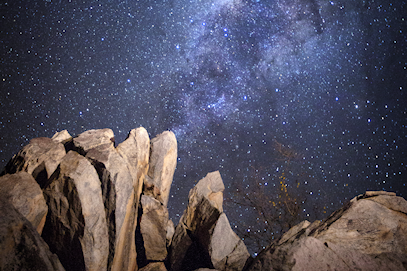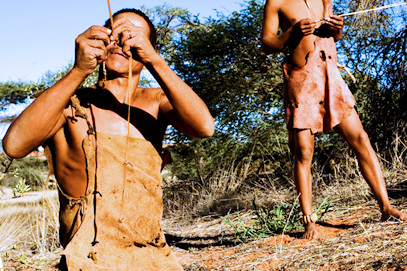Botswana’s Central Kalahari Game Reserve
Help Me Plan- Home
- >
- African Travel
- >
- Botswana
- >
- Central Kalahari Game Reserve
Central Kalahari Destination Guide
The Central Kalahari Game Reserve stands as Africa's ultimate wilderness destination, protecting a harsh yet beautiful ecosystem spanning 52,800 square kilometers of sweeping grasslands, fossil riverbeds, and desert-adapted wildlife. Home to black-maned lion, resilient San communities, and rare species like barking gecko, it offers an unmatched, crowd-free safari experience in one of Earth’s last untouched frontiers.
Getting to Central Kalahari
By Air: Guests typically connect via Johannesburg to Maun, then continue by light aircraft to camps within or near the reserve.
By Road: CKGR is very remote. Self-drive is demanding and risky after dark. We keep road transfers short and limited to safe daylight legs between airstrips and lodges.
Weather & Best Time to Visit
December–April brings short rains that green the pans, draw grazers and predators, and deliver peak birding. Roads can be muddy and some routes slow.
May–October is dry with clear days and cold nights. Driving is easier and visibility is excellent as wildlife concentrates near scarce water sources.

Reasons to visit the Central Kalahari
Home of the San
San communities have inhabited this region for thousands of years. Selected activities at private lodges include guided walks that share traditional skills and deep knowledge of the land.
Vast Open Spaces
Salt pans like Sunday, Leopard, and Piper Pan amplify the sense of scale. Wide horizons and warm tones at sunset make rewarding landscape photography.
Remote Adventure
No crowds, limited infrastructure, and scarce surface water define a true wilderness experience. Ancient fossil riverbeds underscore the area’s geological past.
Experiences to Savor in the Central Kalahari
Memorable experiences in the Central Kalahari center around the seemingly infinite space, untouched wilderness, and the relative solitude you'll enjoy while in this vast reserve.

Get lost in the enormity
The reserve’s scale is humbling and unforgettable, with vistas that run to the horizon.
Stargazing
Big skies and minimal light pollution deliver superb stargazing across the reserve.
Back to your roots
Archaeology and genetics point to deep human origins in southern Africa; time with San guides adds meaningful cultural context.Useful Information
History
San communities, often called Bushmen, have lived across the Kalahari for tens of thousands of years, relying on their deep understanding of nature to survive in the desert. The Central Kalahari Game Reserve was established in 1961 to conserve this remote wilderness. In the late 1990s, many San families were relocated, leading to landmark court cases. A 2006 ruling confirmed their right to live within the reserve, and a 2011 Court of Appeal decision restored access to vital boreholes, reaffirming both cultural and environmental preservation in this vast landscape.
Wildlife
The Central Kalahari Game Reserve is home to an extraordinary array of wildlife adapted to arid conditions. Antelope such as gemsbok, springbok, steenbok, and eland thrive by drawing moisture from vegetation rather than surface water. Predators include the dark-maned Kalahari lion, cheetah, leopard, brown hyena, and spotted hyena. Smaller mammals like black-backed jackal, Cape fox, meerkat, and bat-eared fox are common. Birdlife is prolific, with raptor and ostrich well represented. In the wetter northern areas, visitors may also see elephant, giraffe, and buffalo drawn to seasonal pans after summer rain.
Vegetation & Terrain
The Kalahari is one of the largest sand basins on Earth, spanning much of Botswana and parts of neighboring countries. Its name derives from the Tswana word meaning “great thirst,” reflecting the region’s scarcity of water. The Central Kalahari Game Reserve features sweeping grasslands interspersed with sand dunes, acacia woodlands, and fossilized riverbeds that trace ancient watercourses. Deception Valley, one of the most famous of these, offers a glimpse into the area’s geological past. Scattered camelthorn trees and golden plains create timeless desert scenery under expansive, luminous skies.
Activities
Exploring the Central Kalahari involves guided game drives that cover vast distances and reveal its unique desert ecosystem. Experienced rangers, often accompanied by San trackers, share insights into wildlife behavior and survival techniques. Walking excursions with San guides provide a fascinating look at traditional skills passed through generations. Evenings bring exceptional stargazing beneath unpolluted skies. Birding and landscape photography are rewarding year-round. Visitors should always follow park regulations, travel with guides, and remain cautious in this remote and pristine wilderness environment.









